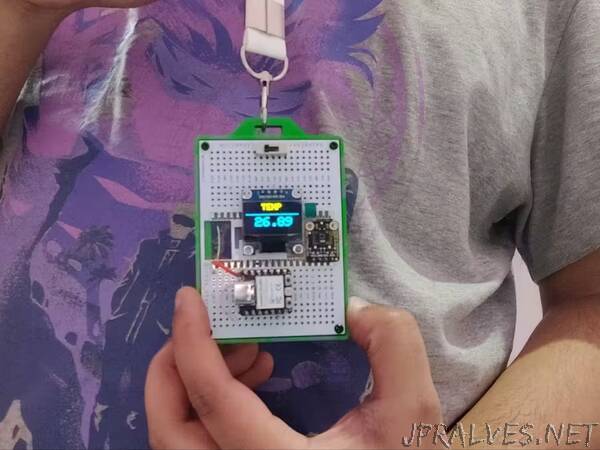
“The Temperature Card is a wearable XIAO and SSD1306-based device that displays the current temperature using an SHT40 sensor.
Story
Here’s something cool: The TEMPERATURE CARD The project is a wearable ID card-like device that has an OLED screen that displays live temperature readings taken from the SHT40 temperature sensor module.
The heart of this project was an XIAO ESP32C3 development board, which is paired with an SSD1306 display. An SHT40 TEMP sensor is being used for temperature data, and the whole setup is powered by a small 3.7V LiPo cell that is connected directly to the XIAO ESP32C3 board’s battery terminals.
The whole device was made in two stages: the first was the breadboard version, and the second was on a prototyping board, which was then encased in a 3D-printed body.
The whole article is about the build process of this project, so let’s get started with the build.
Materials Required
These were the components used in this project:
- XIAO ESP32C3 DEV Board
- SHT40 TEMP SENSOR
- SSD1306 Display
- Custom Prototyping Board
- 3D-printed parts
- Silver-copper wire
- breadboard
- jumper wires
- Slide switch
- M2 Screws
In this project, we are using the XIAO ESP32C3, which is a IoT mini-development board based on the Espressif ESP32C3 WiFi/Bluetooth dual-mode chip. ESP32-C3 is a 32-bit RISC-V CPU, which includes an FPU (Floating Point Unit) for 32-bit single-precision arithmetic with powerful computing power.
This board comes with an external antenna to increase the signal strength for wireless applications. It also has a small and exquisite form-factor combined with a single-sided surface-mountable design.
It is equipped with rich interfaces and has 11 digital I/O that can be used as PWM pins and 4 analog I/O that can be used as ADC pins. It supports four serial interfaces, such as UART, I2C and SPI. There is also a small reset button and a bootloader mode button on the board.
The battery connector on the backside of the DEV board will be used in this project to add a LiPo cell to power the XIAO as well as the display and SHT40 sensor.”
